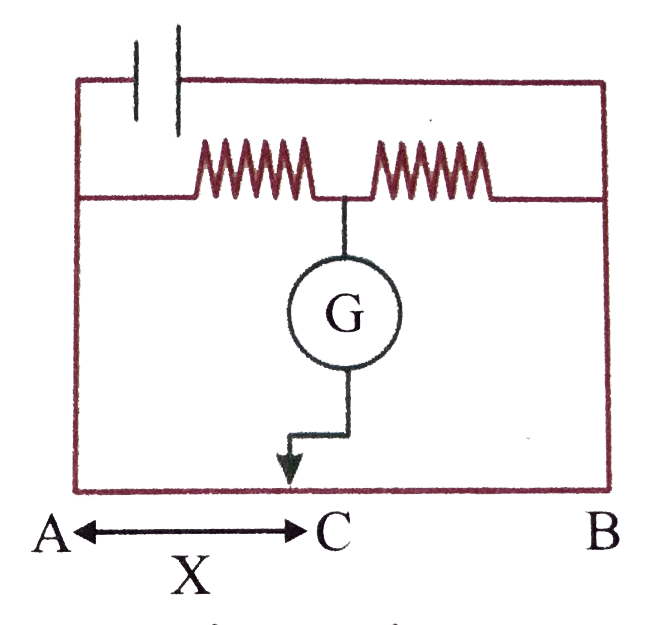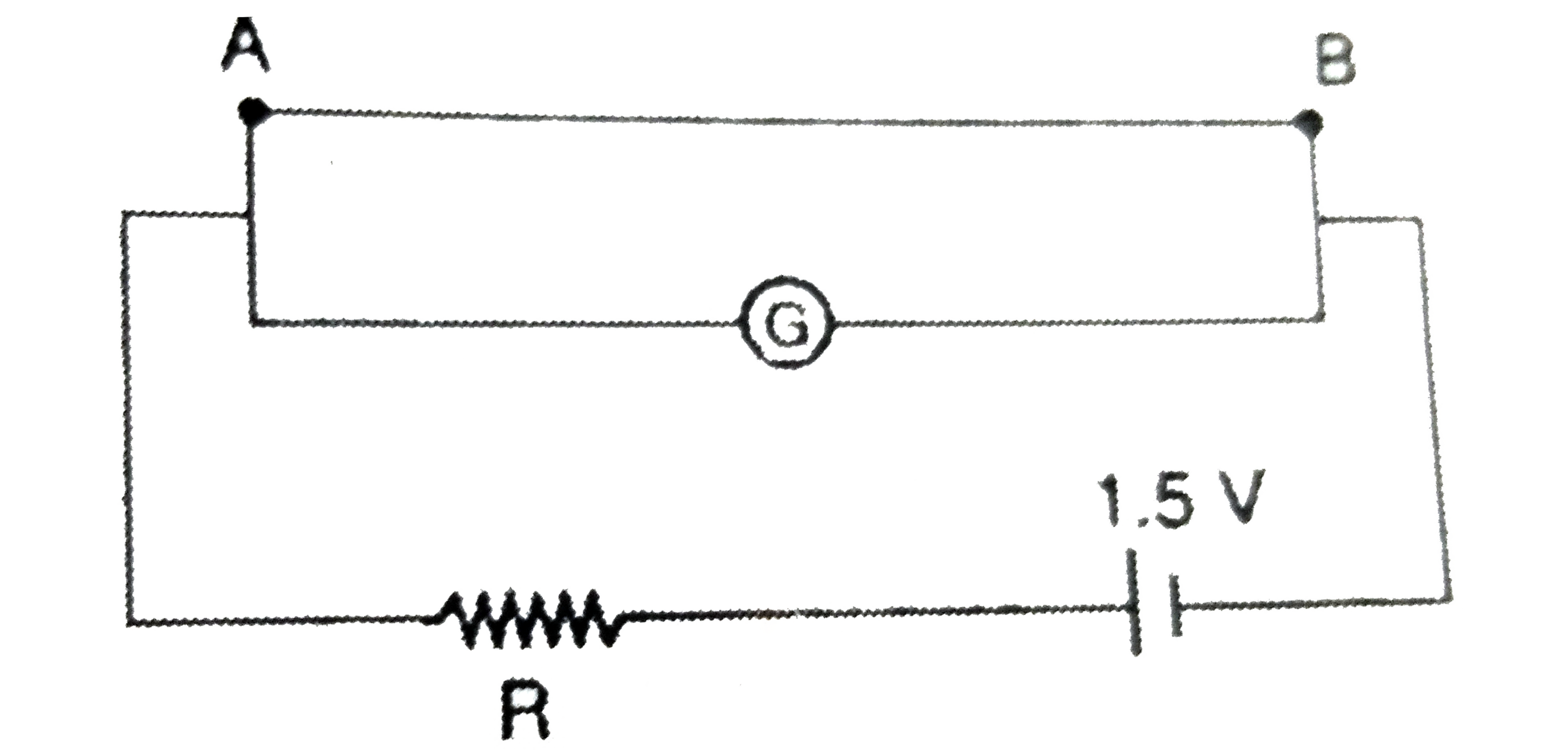In the given circuit, no current is passing through the galvanometer. If the cross sectional diameter of the wire AB is doubled, then for null point of galvanometer, the value of AC would be:

x4
4x
2x
x
The correct Answer is:D
Step by step video & image solution for In the given circuit, no current is passing through the galvanometer. If the cross sectional diameter of the wire AB is doubled, then for null point of galvanometer, the value of AC would be: by Physics experts to help you in doubts & scoring excellent marks in Class 12 exams.
Updated on:21/07/2023Similar Questions
If 2% of the main current is to be passed through the galvanometer of resistance G, the resistance of shunt required is
View SolutionIn the given circuit, find the current in mA) in the wire between points A and B.

View SolutionIn a ammeter 0.2% of main current passes through the galvanometer. If resistance of galvanometer is G, the resistance of ammeter will be
View SolutionIn the circuit in fig. If no current flows through the galvanometer when the key k is closed, the bridge is balanced. The balancing condition for bridge is

View SolutionIn the meter bridge circuit shown, the null point is obtained at C(AC=x) on the wire AB. If the diameter of the wire AB is doubled, the position of the new null point C' will correspond to

View SolutionA nichrome wire AB, 100 cm long and of uniform cross section cross section is mounted on a meter scale the points A and B coinciding with 0 cm and 100 cm marks respectively. The wire has a resistance S = 50 ohm, Ay point C along this wire, between A and B is called a variable point to which on end of and electrical element is commeted. In the following questions this arrangement will be referred to as 'wire AB'.
In the circuit adjacent arrangement it is found that deflection in the galvanometer is 10 divisions. Also the voltage across the 'wire AB' is equal to the across the galvanometer. the current sensitivity of the galvanometer is about.

View SolutionStatement I: In the meter bridge experiment shown in figure, the balance length AC corresponding to null deflection of the galvanometer is x. If the radius of the wire AB is doubled, the balanced length becomes 4x.
Statement II: The resistance of a wire is inversely proportional to the square of its radius.

View SolutionSTATEMENT-1 : In the meter bridge experimeter shown in figure the balance length AC corresponding to null deflection of the galvanometer is x. If the radius of the wire AB is doubled, the balance length becomes 4x.

and
STATEMENT-2 : The resistance of a wire a inversely proportional to the square of its radius.
View SolutionWhen 2 amperes current is passed through a tangent galvanometer, it gives a deflection of 30∘. For 60∘ deflection, the current must be
View SolutionIn the adjacent circuit a resisttance R is used. Initially with 'wire AB' not in the circuit, the galavanometer shhows a deflection of d divisions. Now, the wire AB is conneted parallel to the galvanometer and the galvanometer shows a deflection defiction nearly d/2 divisions. Therefore

View Solution
